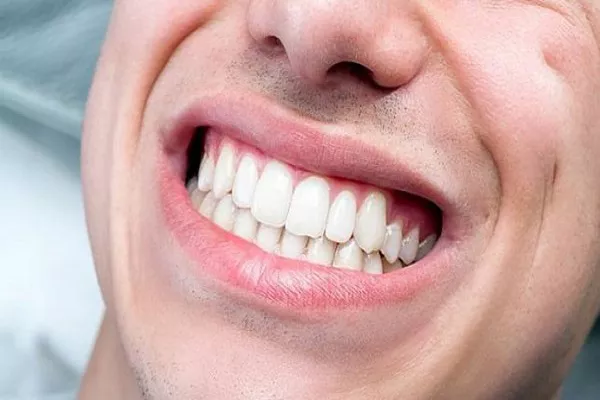When it comes to orthodontic treatment, braces play a crucial role in correcting dental misalignments and achieving that perfect smile. Rubber bands, also known as elastics, are a vital component of braces that help in aligning the teeth and jaws properly. However, not all rubber bands are created equal, and understanding the types of rubber bands available and their strengths can make a significant difference in the effectiveness of the treatment. In this comprehensive guide, we will explore the toughest rubber bands for braces, their benefits, and how they contribute to successful orthodontic outcomes.
1.The Role of Rubber Bands in Orthodontic Treatment
Before delving into the toughest rubber bands for braces, let’s first understand their significance in orthodontic treatment. Rubber bands are used to exert gentle yet constant pressure on the teeth and jaws, assisting in moving them into their desired positions. They work in conjunction with braces to correct various issues like overbites, underbites, crossbites, and other malocclusions.
Orthodontists use different types of rubber bands, and each type has a specific purpose. The most common types include interarch rubber bands, which connect the upper and lower jaws, and intraarch rubber bands, which help align individual teeth. The strength of the rubber bands plays a crucial role in the effectiveness of the treatment.
2.Types of Rubber Bands for Braces
Class I Elastics: These are typically used to correct issues with the bite, helping to align the upper and lower jaws. They are the strongest rubber bands used in orthodontics and are available in various sizes and strengths.
Class II Elastics: These elastics are specifically designed to correct overbites, where the upper teeth protrude over the lower teeth. They assist in pulling the upper teeth back, aligning them with the lower teeth.
Class III Elastics: Class III elastics are used to correct underbites, where the lower teeth protrude past the upper teeth. They aid in pulling the lower teeth back to align with the upper teeth.
Vertical Elastics: Vertical elastics are used to correct midline discrepancies, where the center of the upper and lower jaws does not align properly.
Triangle Elastics: Triangle elastics are triangular in shape and provide added strength to support the correction of specific bite issues.
3.Factors Determining the Toughness of Rubber Bands
Several factors influence the toughness of rubber bands used in braces:
Size and Thickness: Rubber bands come in various sizes and thicknesses, with thicker bands generally exerting more force than thinner ones.
Material Composition: The materials used in manufacturing the rubber bands affect their strength and elasticity. High-quality latex rubber bands are often tougher and more durable.
Elasticity and Force: The elastic property of rubber bands determines how much force they can apply to move the teeth. Tougher rubber bands exhibit higher elasticity and exert consistent force throughout their usage.
Wear Schedule: The frequency and duration for which the rubber bands are worn each day can impact their effectiveness. Following the orthodontist’s instructions regarding wear schedule is essential for optimal results.
4.Advantages of Using the Toughest Rubber Bands
Opting for the toughest rubber bands for braces offers several advantages:
Faster Treatment: Stronger rubber bands can often accelerate the treatment process by exerting more substantial force on the teeth, leading to quicker alignment.
Effective Bite Correction: Toughest rubber bands are highly efficient in correcting bite issues, such as overbites and underbites, providing better oral function and aesthetics.
Improved Tooth Movement: The consistent and strong force applied by these rubber bands aids in moving teeth to their desired positions more effectively.
Stability and Reliability: Tough rubber bands are less likely to break during wear, ensuring a consistent treatment process and minimizing interruptions.
5.Precautions and Tips for Using Toughest Rubber Bands
While toughest rubber bands have numerous benefits, there are essential precautions and tips to consider:
Consultation with Orthodontist: Always consult your orthodontist to determine the appropriate type and strength of rubber bands needed for your specific case.
Proper Wear and Replacement: Follow the recommended wear schedule and replace rubber bands as instructed by your orthodontist.
Oral Hygiene: Maintain good oral hygiene practices to prevent plaque buildup around brackets and rubber bands.
Avoid Self-Adjustment: Do not attempt to adjust or change the rubber bands yourself; seek professional guidance if needed.
Conclusion
Choosing the toughest rubber bands for braces can significantly impact the success of orthodontic treatment. These strong and durable elastics offer a range of benefits, including faster treatment, effective bite correction, improved tooth movement, stability, and reliability. However, it’s crucial to follow your orthodontist’s recommendations and maintain proper oral hygiene to ensure the best possible outcomes. If you’re considering braces or are already undergoing treatment, discuss with your orthodontist the option of using the toughest rubber bands to achieve that confident and radiant smile you’ve always wanted.
https://www.padmel.com/archives/1476
https://www.padmel.com/archives/1373
https://www.padmel.com/archives/9357



























